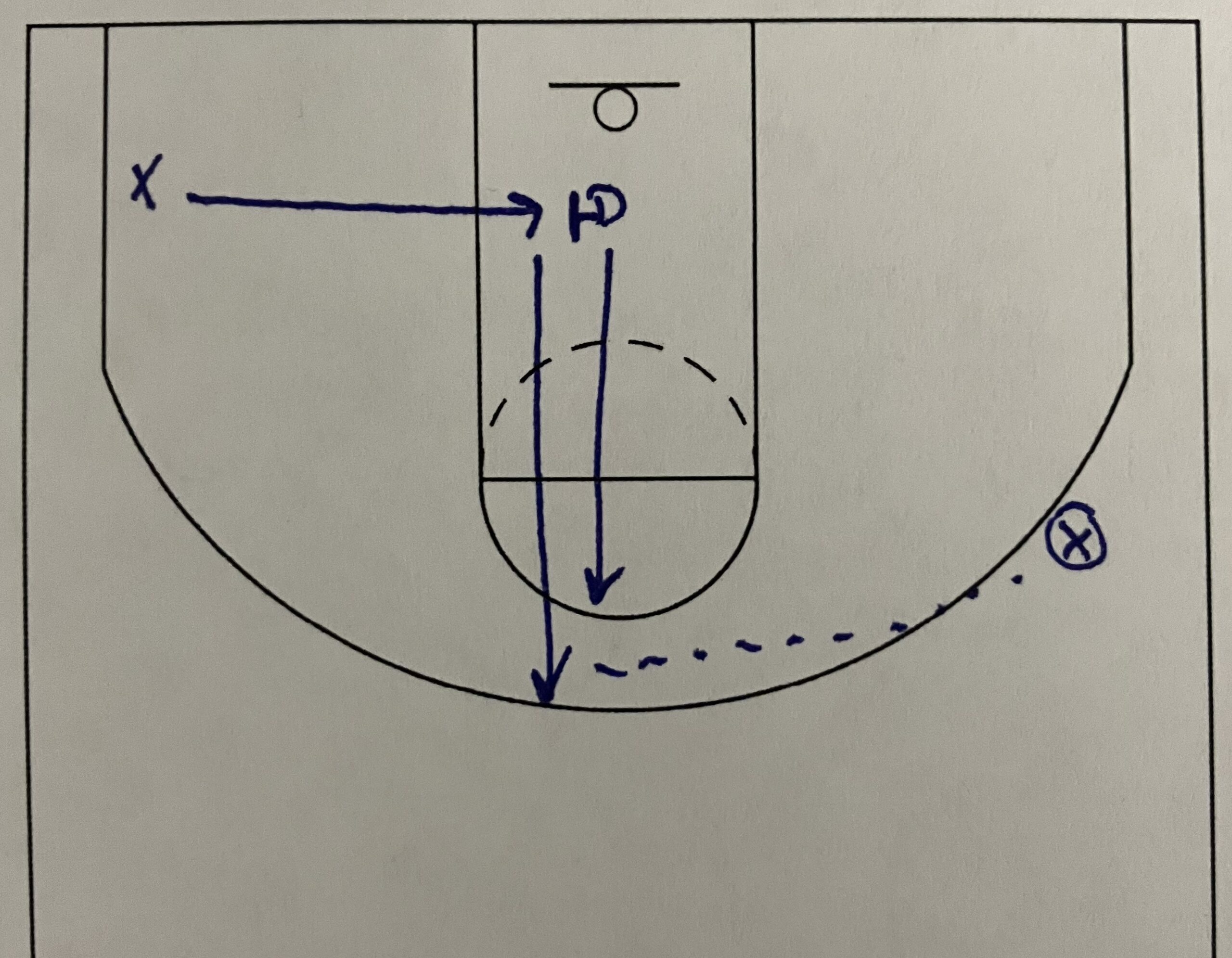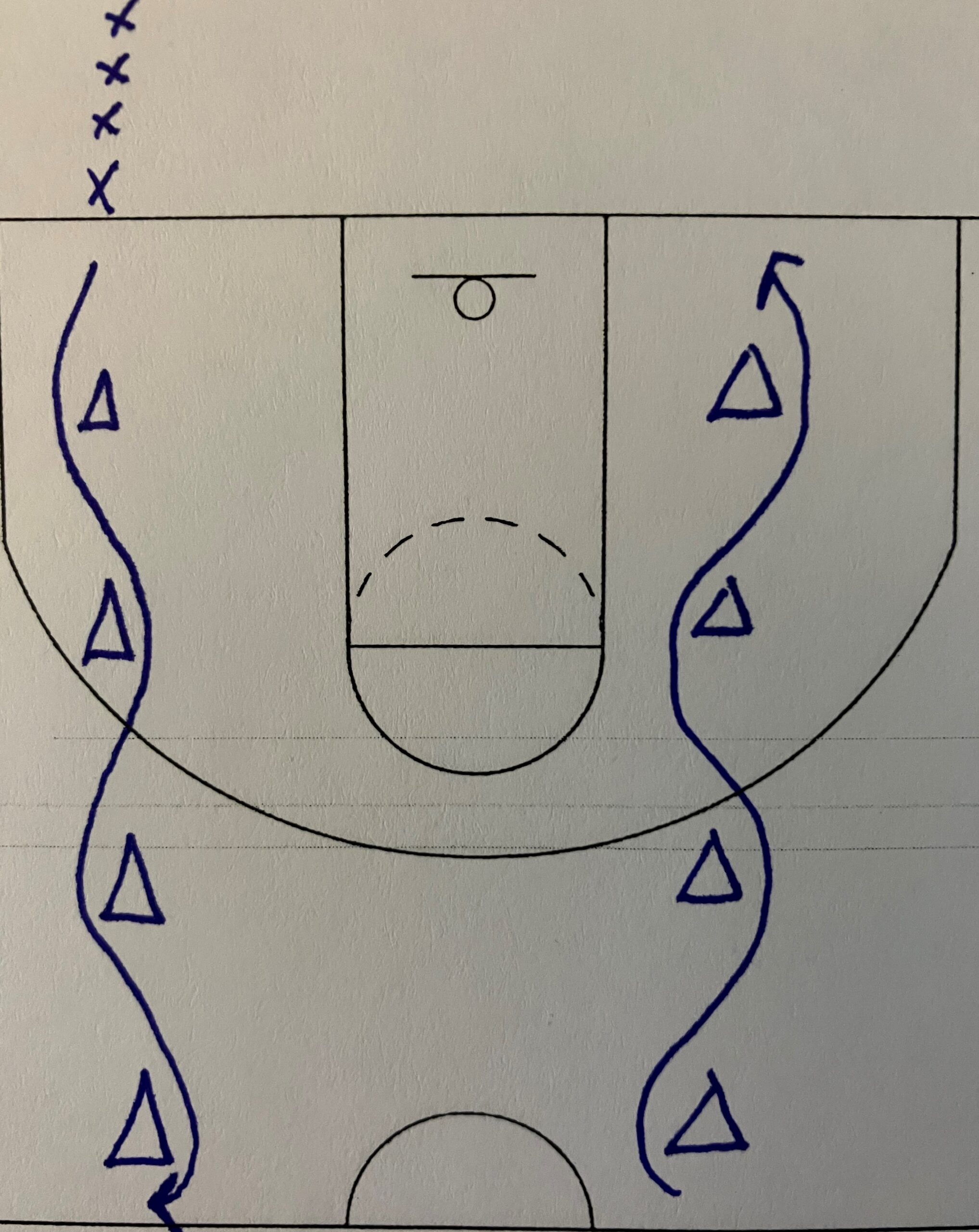A team that is able to score in transition can make a big difference between a good record and a bad record. Scoring in transition keeps the offense from having to run a set offense. It also gives the offense a chance to score against a non-set defense. The easiest way to score is in transition because the defense is not back and ready.
If transition scoring is the easiest way to score, then is there a way to teach players how to score in transition? The biggest problem I have seen with players is knowing when to attack in transition and when to pull it back out and set up the offense. When players are able to recognize when to go and when to stop, it will help teams be better in transition.
My rule is we have to be +1 or greater to attack in transition. This means their is one more offensive player in transition than defender. That would be a 3 on 2, or 4 on 3, or 4 on 2, etc. I want the players to recognize the offense having the advantage and attacking the basket quickly.
If the defense has the same amount of players or more back on defense as the offense has players in transition, then I want the ball to be pulled back out front and the team to run the offense. I do not want the offense attacking in a 3 on 3, 4 on 4, 3 on 4, etc. situation.
So, how can I get the team to know when to attack and when to pull the ball back out front? This 5 on ? drill forces the offense to read and recognize the number of defenders and adjust what they are doing in transition quickly. The decision making process is in a small time frame so it forces the offense to make decisions quickly while they are running up the floor.
This drill has improved our transition game drastically. It has led to more scoring in transition while also reducing the number of turnovers we have in transition. The players are no longer trying to attack the defense in transition without having an advantage. This drill does not take up a lot of practice time but the benefits of the drill are very high.
How to Run the 5 on ? Drill?
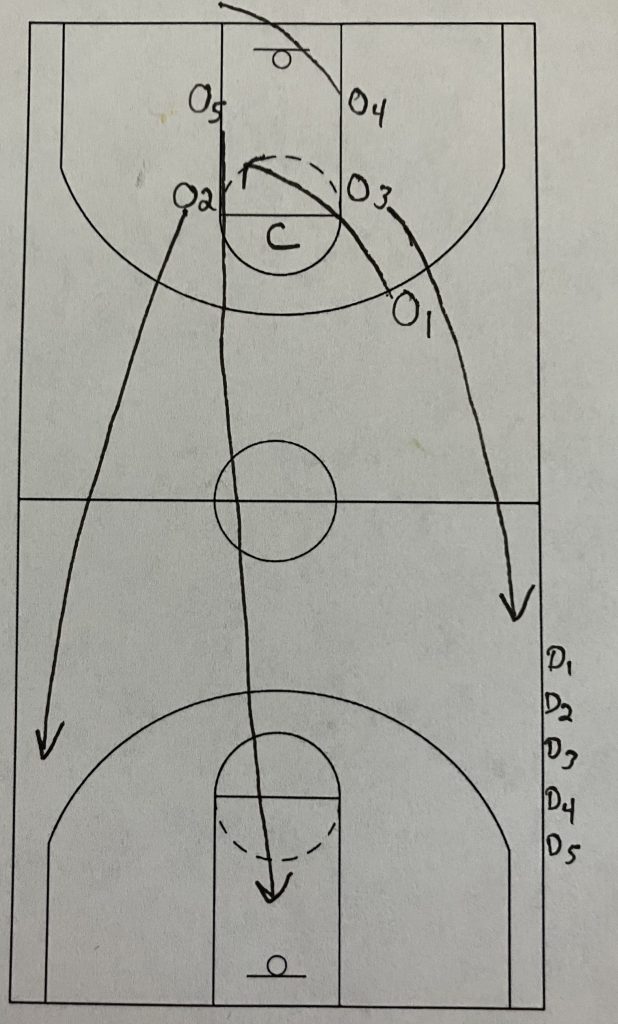
The start of the drill has the offense on one end with the defense lined up out of bounds on the other end. I have the offense lined up in a free throw rebounding situation to start the drill. A coach will shoot a free throw with the offense boxing out the free throw. On a make the offense starts their transition with O4 taking the ball out. O2, O3, and O5 take off down the floor. O1 comes down to catch the in-bounds pass and start down the floor with O4 as the trail player.
As O1, the point guard catches the in-bounds pass, the defense comes out on the floor. The defense can have as few as 1 player come out or all of them come out. The offense has to react to the number of defenders coming out while they are in transition. The number of defenders determines how the offense plays the possession.
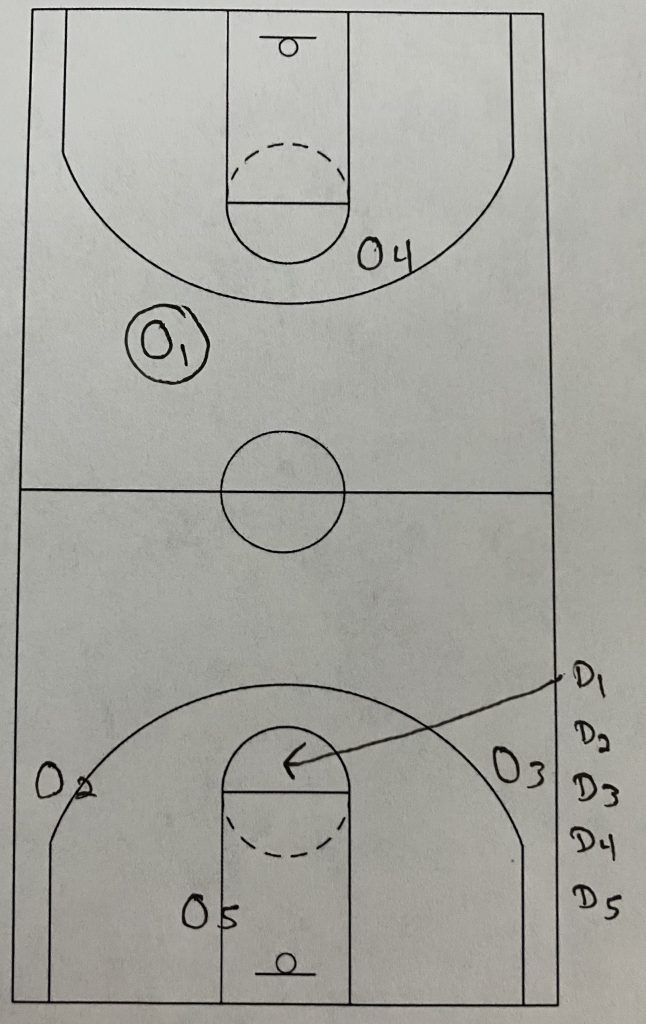
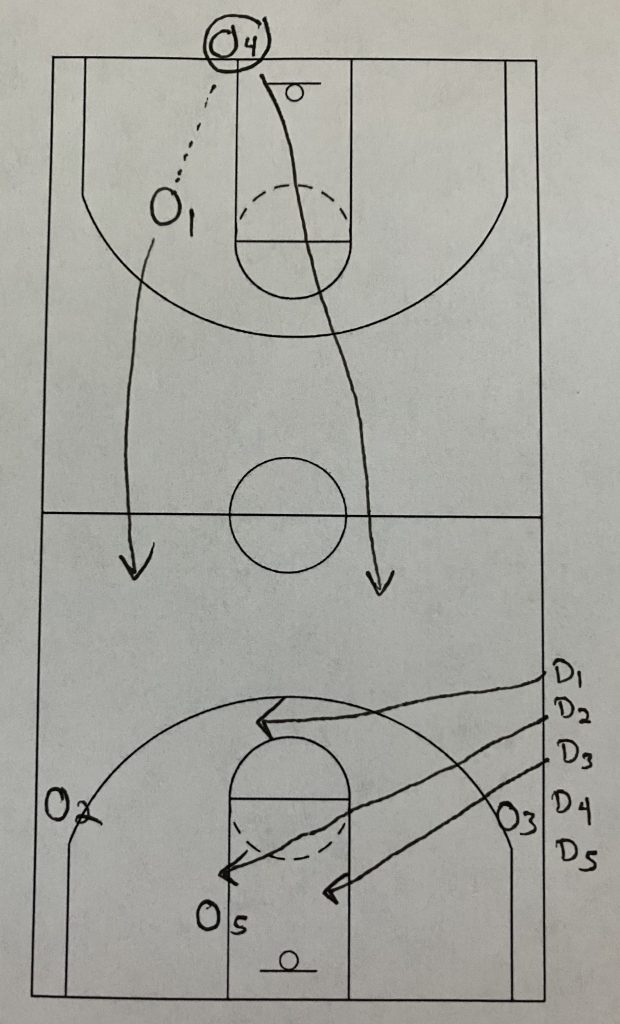

As the offense starts to bring the ball down the floor, the defense comes out from the sideline. The offense reacts to the number of players coming onto the court. The fewer the defenders, the quicker the basket needs to be made.
The first diagram has only one defender come out onto the court. The offense should be trying to score in one or two passes and as quickly as possible. The offense has a 3 on 1 if the point guard passes the ball up the floor. Or a 4 on 1 if the point guard dribbles all the way down the court. The offense should get the ball straight to the basket and up for a layup very fast. The longer the offense takes, the more time the other defenders have to get back and help.
The 2nd diagram has 3 defenders come out on the floor. The offense should still be scoring quickly but with a little more caution. The offense should still be trying to score within 2 or 3 passes so as not to give the other 2 defenders time to get back. But the offense cannot attack with recklessness. They have to take care of the ball and not turn it over but still be in an aggressive attacking mindset.
The 3rd diagram has all 5 defenders coming out. The offense should see this and move straight into their secondary break. The transition basket is not going to occur. So, the offense should move into their offensive plays.
I have a secondary break that the players go straight into that will be followed by a motion offense if the secondary break does not get a shot. The players should see 5 defenders and immediately change their mindset from trying to score to executing the secondary break. The offensive focus should now be to not having a turnover and trying to get a quality shot out of the offense.
Conclusion
One of the biggest obstacles of any team wanting to score in transition is knowing when to attack and when to slow it down. Players have to learn to recognize how many defensive players are back on defense. This means training their eyes to count the defenders.
By keeping the defensive players off on the side until the transition has started means the offense has to make split second decisions. These decisions are reactionary to the number of defenders running onto the court. When players are reacting and not thinking, they are playing faster.
This drill is about getting players to take advantage of situations when they are available. When games can be decided by one basket, this drill can help be the difference between winning and losing. A team can steal a basket when the defense does not get back. A team can also prevent having a turnover when trying to attack without having a numbers advantage. This drill will help players learn when to attack and when to play slower.


